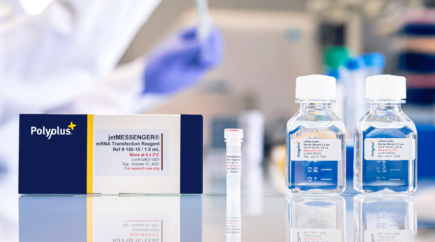jetMESSENGER® is a designed for high mRNA transfection efficiency in primary cells, cancer cell lines, neurons, and stem cells.

We use cookies to help you navigate efficiently and perform certain functions. You will find detailed information about all cookies under each consent category below.
The cookies that are categorized as "Necessary" are stored on your browser as they are essential for enabling the basic functionalities of the site. ...
Necessary cookies are required to enable the basic features of this site, such as providing secure log-in or adjusting your consent preferences. These cookies do not store any personally identifiable data.
Functional cookies help perform certain functionalities like sharing the content of the website on social media platforms, collecting feedback, and other third-party features.
Analytical cookies are used to understand how visitors interact with the website. These cookies help provide information on metrics such as the number of visitors, bounce rate, traffic source, etc.
Advertisement cookies are used to provide visitors with customized advertisements based on the pages you visited previously and to analyze the effectiveness of the ad campaigns.
Follow this guide to ensure that you obtain reproducible and reliable results.
DNA transfection is a main tool for current genetics as well as cell and molecular biology studies. Understanding the underlying mechanisms and the different parameters affecting transfection is crucial for optimal, reproducible, and trustable results. Following these seven tips will ensure reliable results.
Polyplus-transfection created a database where scientists can find optimal conditions to transfect their cells:
Please accept cookies to access this content